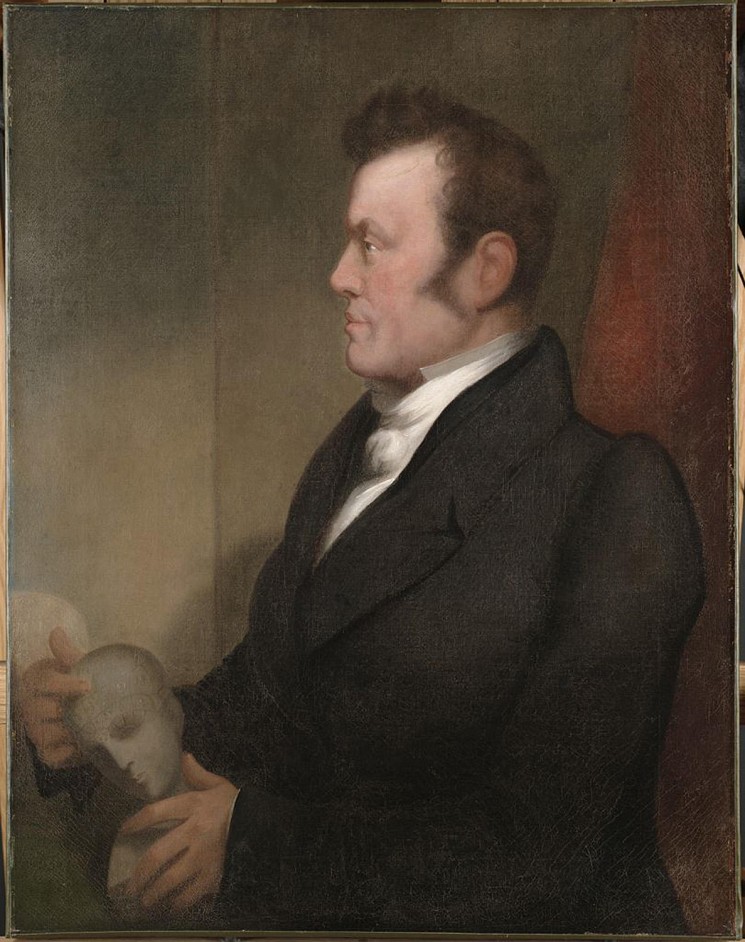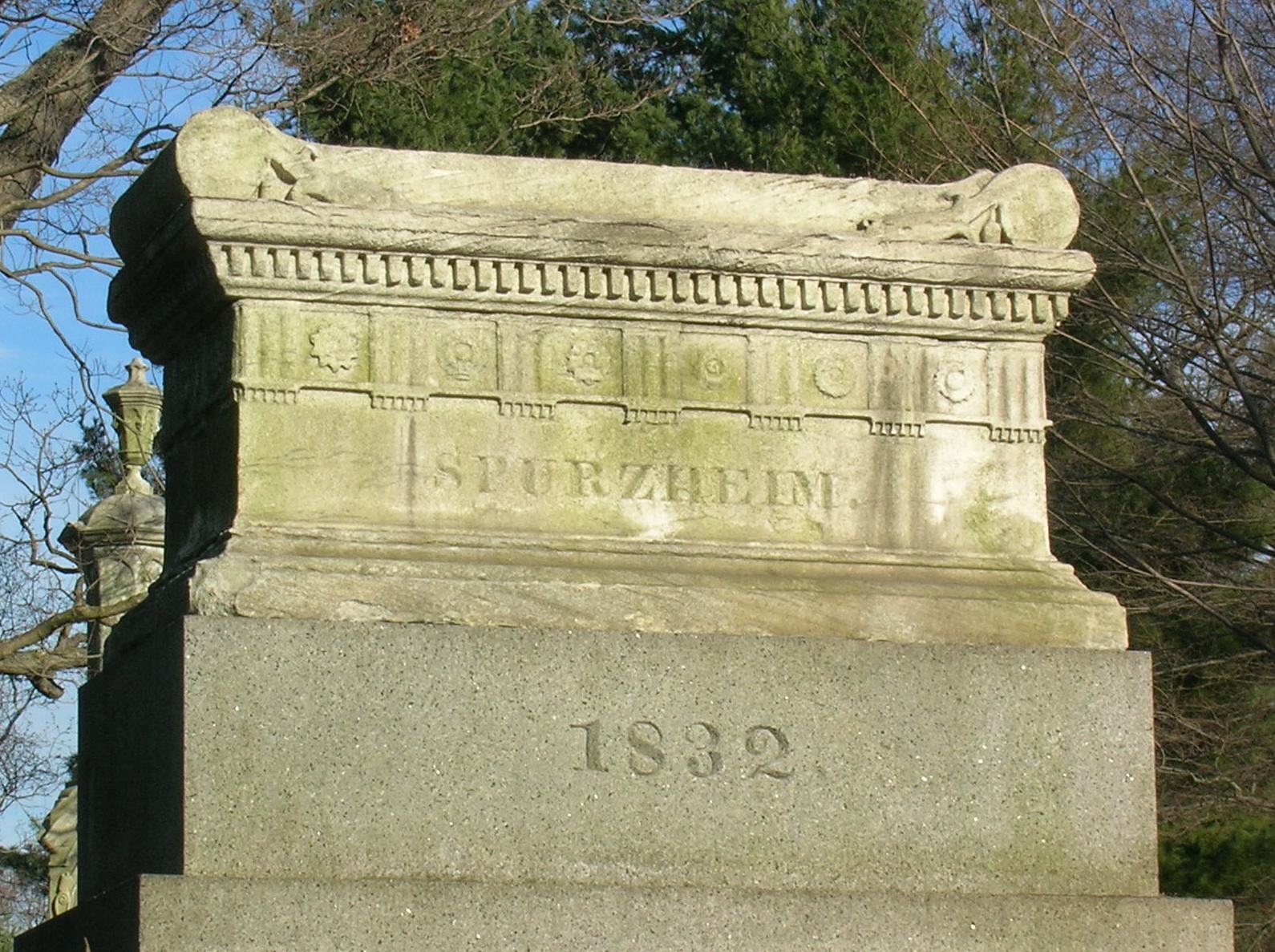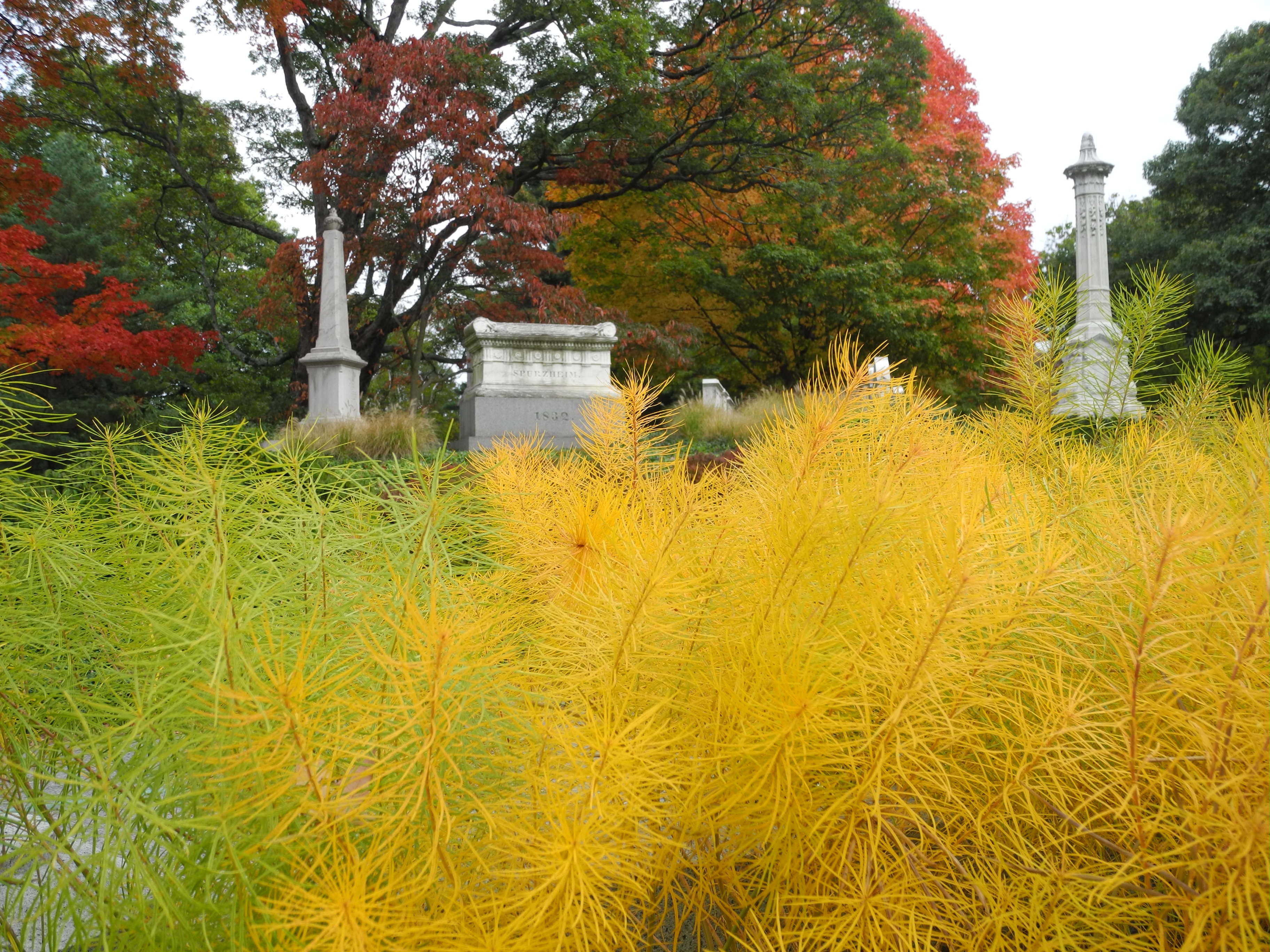Johann Spurzheim (1776 – 1832)

In 1832 Johann Spurzheim traveled to the United States for a projected two-year stay of travel and lectures. In Boston he gave a course of lectures on the anatomy of the brain for medical professionals and two series of lectures on phrenology. His lectures on the brain were given without any reference to the doctrines of phrenology and gained Spurzheim great respect as an anatomist of the brain.
He labored hard at his daily lectures apparently to the neglect of his own health and near the close of the lecture series in late October, he was confined to his bed where he died on November 10, 1832.
The Boston Medical Association unanimously voted to attend his funeral and Josiah Quincy, president of Harvard University (Lot #396 Sweetbrier Path) served as the chair of a committee to oversee Spurzheim’s final arrangements. After the funeral service on November 17 at the Old South Church, attended by over three thousand people, his body was conveyed to the receiving tomb belonging to Mount Auburn Cemetery at the Park Street Church. Wealthy Bostonian William Sturgis paid for a beautiful Italian monument to be placed at a prominent place near the entrance of the Cemetery. The striking monument to Spurzheim‘s memory became one of the most celebrated features of the new cemetery.
Born on last day of the year 1776 in Longvich, a village near Trier (or Treves), a German city on the Moselle River near the Luxembourg border, Spurzheim was the son of a local farmer. Raised in a Lutheran family, he received a classical education at the college in Trier intending to follow a theological profession. When war between Germany and France interrupted his education in 1799, he went to Vienna where he became the student and later colleague of Dr. Franz Joseph Gall, an established physician.
Gall had discovered what he felt was a distinct correlation between external prominences of the skull and the talents, character and mental capacities of individuals. Just as eyes were the organs of sight, Gall proposed that different parts of the brain were the organs or locations of different intellectual and moral capacities.
By 1804 Spurzheim had become Gall’s associate and undertook to perfect the dissection of the brain. In 1805, Spurzheim and Gall left Vienna and traveled throughout Germany explaining their physiological discoveries. Their demonstrations were greeted with interest and acclaim.
In 1807 they settled in Paris and demonstrated their theories for leading doctors and scientists. They built a large collection of skulls and casts of heads to illustrate how certain parts of the brain were indicative of certain mental powers. It was Spurzheim who adapted the word Phrenology (the science of mind) to describe this new theory, and he sought to apply its findings to moral reform.
In 1814 Spurzheim moved to London and lectured throughout England and Scotland. Although many medical experts were quite skeptical of the theory, all were impressed by his anatomical demonstrations and admired his powerful intellect. Spurzheim continued to gain converts, and in 1817 he was made a Licentiate of the Royal College of Physicians.
Later in 1817, he returned to Paris where he continued his lectures on anatomy, physiology and pathology and became a Doctor of Medicine at the University of Paris. He married a widow with three daughters. His wife was a skillful artist and aided him by supplying many of the drawings used in his lectures. After her early death, he devoted himself to popularizing his ideas.
He published numerous books: Phrenology, focused on the powers of the mind and their related organs of the brain; Anatomy of the Brain, devoted to the investigation of the brain and nervous system, and Philosophical Principles in which he expounded his thoughts on the mind and its relation to religion and morality. He explained his theories of education in his Elementary Principles of Education and collected his observations on the deranged functions of the brain in a work entitled Insanity.
His phrenological theories were acclaimed by some and rejected by others but he was honored for his devotion to the promotion of the knowledge of human nature and his insistence on careful and actual observations to yield ultimate truths.
This striking Italian monument to Spurzheim’s memory paid for by wealthy Bostonian William Sturgis was placed in a prominent location near the entrance of Mount Auburn and became one of the most celebrated features of the new Cemetery.
SOURCES:
Top image: Johann Gaspar Spurzheim by Alvan Fisher(Alamy Stock Photo).
Professor’s Follen’s Funeral Oration Delivered at the Burial of Dr. G. Spurzheim, 1832. Nahum Capen, Reminiscences of Dr. Spurzheim, 1881.
Charles Colbert, A Measure of Perfection: Phrenology and the Fine Arts in America, 1997. John van Wyhe, The History of Phrenology on the Web . freeserve.co.uk), 10/6/2000.


Leave a Reply